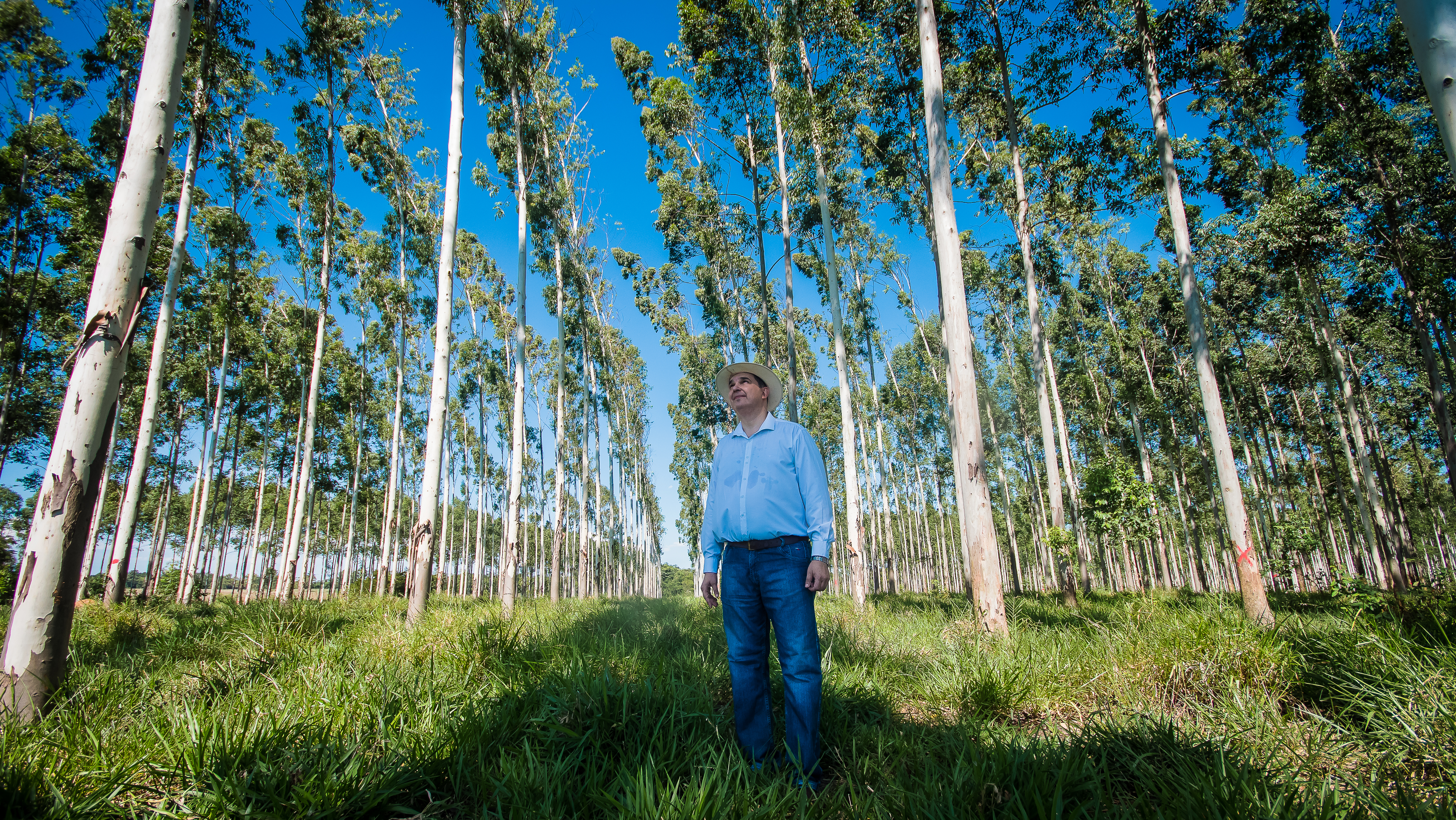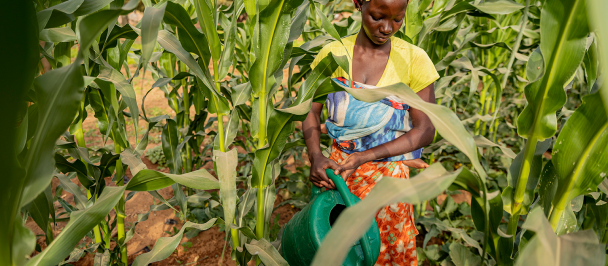Juan Antonio Secchia Oddone inherited 600 hectares of land from his grandfather within the Atlantic Forest of Alto Paraná. Aware of the importance of producing in a sustainable way, he decided to implement the silvopastoral system. The implementation of this system allowed him to double his production and witness benefits for his livestock as well as for the pasture and biodiversity.
Lieutenant Colonel Antonio Odonne Sarubbi fought in the Chaco War, the biggest in South America of the twentieth century. It was in this difficult and hostile atmosphere where he learned to love and respect the environment, and it is these principles that he passed down onto his descendants along with the land he owned in Caazapá, eastern Paraguay. His grandson, farmer Juan Antonio Secchia Oddone, explained "We inherited 600 hectares of land from my grandfather, Antonio Oddone Sarubbi, in the 90s so that we could continue farming on this land and to be able to sustain ourselves economically. After defending his country, he instilled a respect into us for this nation and its environment, encouraging us to move forward yet to produce responsibly."
The farm, called San Isidro Labrador, initially had 300 heads of cattle with which he produced milk, heifers and calves. But in 2012, Juan Antonio decided to take a risk in order to optimize the use of the land through investing in a new way of producing. He applied the silvopastoral system to 40 hectares, a productive alternative that combines trees, pasture and animals in the same space to improve productivity.
By 2018, he had doubled the area where the silvopastoral system was applied and continues expanding thanks to the support received by the Ministry of Environment and Sustainable Development (MADES), the United Nations Development Programme (UNDP) through the Green Commodities Programme, and the Rural Association of Paraguay (ARP).
Juan Antonio Secchia Oddone. Photo © UNDP-Paraguay
Cattle at Mr. Secchia's farm. Photo © UNDP-Paraguay
Under the Green Production Landscape Programme, the support consisted of 133,500 seedlings which were donated to four cattle farms, one of which was San Isidro, within the area of Caazapá, with the objective of applying the silvopastoral system in 200 hectares. The objective for 2019 is to double the area using this system and reach 400 hectares of production under the good practice, promoting conservation of natural resources and improving the beef production process.
“Production has improved under the Silvopastoral System. The cattle are surrounded by trees that provide shade which consequently gives them a better quality of life. Soil and water are vital nourishments; animal waste is reused, and pasture is the best food for them due to its high nutrient content. Before, I had 300 livestock units; today we maintain a herd of 600 livestock units with an approximate production of 240 calves per season, as well as producing 100 litres of milk a day. I’ve doubled my production.” told Juan highlighting the improvements achieved through the implementation of this good practice.
Juan is sure that the application of sustainable practices such as the silvopastoral system will allow his two children and nephews to continue producing on the same land inherited from their great-grandfather, enabling them to continue enjoying the clean, fresh air which he has.
The support Juan has received was provided within the framework of the Green Production Landscapes project. The project aims to protect the biodiversity and functions of the Alto Paraná Atlantic Forest eco-region through training producers to implement sustainable agricultural practices in the area of forest influence resulting in the sustainable production of commodities, collaborating with the fulfilment of the Sustainable Development Goals (SDGs) 12 and 15. The project is led by MADES, implemented by UNDP and financed by the Global Environment Facility (GEF).
Juan Antonio Secchia Oddone and family. Photo © UNDP-Paraguay
Juan Antonio Secchia Oddone and his wife. Photo © UNDP-Paraguay
Resilience and sustainability
Breaking barriers to achieve environmental improvements requires a vision for the future. This factor is fundamental for Dr. Raúl Doria, investor and farmer who works together with his family, with the aim of contributing to the construction of a more resilient world for future generations, as he describes the Silvopastoral System as an effective alternative to improve the productive system and to reduce production pressures on native forests.
To facilitate a scenario that achieves sustainable development, Dr. Doria reforested 1,000 hectares of land within his farm San Ramón (located in Caazapá, which is within the area of influence of the Atlantic Forest of Paraná); 300 of these hectares are dedicated to the production of biomass (firewood for energy) and the other 700 are dedicated for livestock. With the support of MADES, he originally applied the silvopastoral system to around 200 hectares resulting in a green landscape with plenty of shade for cattle. These factors facilitated the duplication of their production: having started with around 500 head of cattle, today it reaches the production of 1,000 per year.
“The financial factor is one of the main challenges for many, so the support of MADES is important to increase its implementation. In addition, this system generates jobs for 50 people in the neighbourhood and has innumerable environmental benefits. So, we’re all moving forward” Dr. Doria explained.
Dr. Esteban Vasconcellos, member of the ARP, considers the application of this good practise to be a lot better today. “It is important to us that we can generate these types of development models which are replicated at the national level. It requires technical support and projects like this” he expressed.
Globally, Paraguay is the 16th largest producer of beef and is the 8th largest exporter of this commodity. It currently has over 150,000 cattle holders and 13.9 million heads of cattle in some 26,000,000 hectares which are distributed throughout the territory. This sector represents 12.1% of the country's Gross Domestic Product (GDP), employs more than 358,000 people, including large, medium, small and micro-producers, and represents 11.3% of the workforce. MADES, aims to construct policy and standards to produce sustainable commodities, thus collaborating with the SDGs that seek responsible production and consumption. This would not be possible without the commitment of key actors in the production chain, main protagonists and conservationists.
About the Green Production Landscapes Project.
It is led by MADES, with the objective to protect the biodiversity and functions of the Upper Paraná Atlantic Forest eco-region (BAAPA), in accordance with SDGs 12 and 15. It is financed by the GEF and implemented by UNDP, co-financed by the Ministry of Agriculture and Livestock (MAG), the National Forestry Institute (INFONA), the Sustainable Finance Bureau (MFS), ADM Paraguay SRL, Louis Dreyfus Company (LDC) and Cargill.

 Locations
Locations







